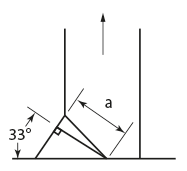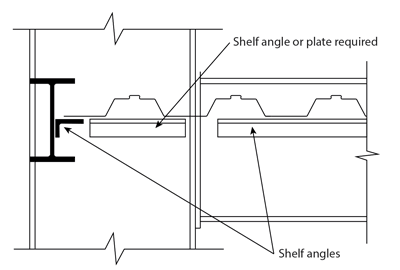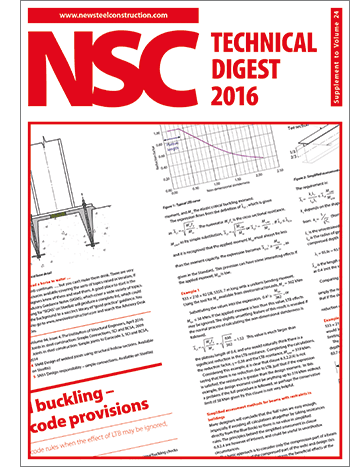Technical
AD 337: Wind pressures for buildings with dominant openings
This AD offers clarification on the determination of wind loads on buildings with dominant openings in the event of a severe storm. Dominant openings (defined in BS 6399-2 and BS EN 1991-1-4 as openings in one face of an area at least twice the total area of openings in the other faces) are often assumed to be shut during a storm but both BS 6399-2 and BS EN 1991-1-4 require that the accidental situation of them being open must be considered. The rules in BS 6399-2 and BS EN 1991-1-4 are discussed.
BS 6399-2
For the situation where the dominant opening is assumed shut, the normal internal pressure coefficients are used, in conjunction with external pressure coefficients, to determine wind loads at ULS. In BS 6399-2, internal pressure coefficients are selected with reference to Clause 2.6 and Table 16. A common assumption is that the four walls are equally permeable and the roof impermeable – which results in a Cpi of −0.3. BRE Digest 436 Part 1, Question 43, notes that the “the internal pressure coefficient for completely clad enclosed warehouse-type buildings without opening windows, may be taken as Cpi = −0.3”.
Where the dominant opening is open, the internal pressure coefficients are determined using Table 17. However, where a dominant opening is assumed shut for the ULS design situation, the condition where it is actually open during a severe storm should be considered; this is explicitly covered in Clause 2.6.1.3, which states that “the condition with the door open should be considered as a serviceability limit state”.
Further advice was given in SCI publication P286, Section 6.2, which clarifies this situation (assumed shut for ULS but actually open) as an accidental limit state (effectively another ULS not a SLS) and recommends that a revised Sp factor of 0.8 should be used. This leads to a much reduced dynamic pressure, and thus reduced values of both internal and external pressure, in conjunction with the load factors being set to 1.0.
BS EN 1991-1-4
In the Eurocode, internal pressure coefficients are given by Clause 7.2.9. For situations where there is no dominant opening (an “opening at the dominant face” in Eurocode terminology), the coefficient is given by Figure 7.13; the internal pressure coefficient varies with opening ratio µ. Note 2 to Figure 7.13 advises that where it is not possible, or not considered justified, to estimate the opening ratio for a particular case then the coefficient should be taken as the more onerous of +0.2 and -0.3. For completely clad industrial buildings, with equal areas of opening on each face, the opening ratio is 0.75 and the resulting internal pressure coefficient is between approximately −0.13 and −0.23, depending on the h/d ratio of the building.
Where there is a dominant opening, the internal pressure coefficients are determined by paragraph 7.2.9(5), which relates internal pressure to external pressure in the same way as Table 17 of BS 6399-2. However, where a dominant opening is assumed normally to be closed during severe storms, the situation where it is unintentionally left open during a storm must also be considered: paragraph 7.2.9(3) states that the condition with the door or window open should be considered as an accidental design situation. The determination of effects for an accidental design situation is covered by expression (6.11a) in BS EN 1990, which effectively sets the partial factor on wind actions at 1.0.
Comment
The Eurocode approach (treating the situation with a door or window left open as an accidental design situation) gives credence to the advice given in P286. The internal pressure coefficients are generally similar in the two standards and the reduction in the magnitude of the wind loading when treated as an accidental design situation is also similar.
Contact: D G Brown
Tel: 01344 636525
Email: advisory@steel-sci.com













